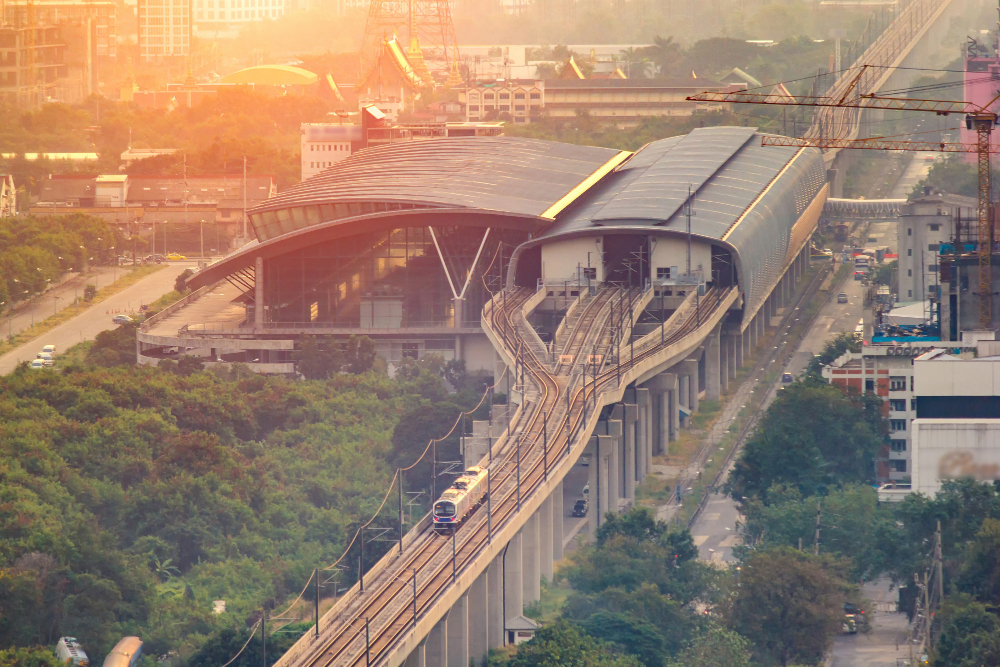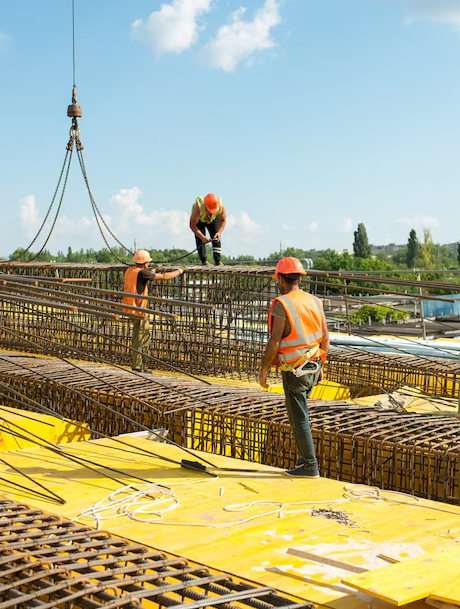
12
Sep 2025
Revolutionizing India’s PEB Industry: Innovations and Future Trajectories
India’s pre‑engineered building (PEB) industry is undergoing a rapid transformation—driven by material science advancements, digitalisation, modular techniques, and sustainability imperatives. This article explores emerging innovations and sets a forward-looking lens on the future of PEBs in India.
- Sustainable Materials & Green Certifications
Eco‑friendly steel & advanced insulation
Indian PEB manufacturers are increasingly using high-strength, high-recycled-content steel, along with state-of-the-art insulation such as PUF panels, vacuum-insulated panels, hemp Crete, and other bio-based foams. These contribute to better thermal performance, reduced energy costs, and lower lifecycle carbon footprint.
Certifications drive design
From LEED and GRIHA to net‑zero building frameworks, PEBs are now engineered to meet rigorous environmental standards .The industry’s shift reflects a broader Indian infrastructure push for sustainability.
- Advancements in Manufacturing & Design Automation
Digitization & robotics in production
PEB fabrication plants are embracing CNC machining, robotic welding, parametric design, and digital fabrication workflows to enhance precision, reduce lead times, and minimize errors
BIM‑powered project execution
Building Information Modelling has matured into BIM 2.0—integrating AI, IoT and AR/VR, enabling full lifecycle design, simulation, coordination, and asset management these platforms support digital twin capabilities essential for complex PEB projects like airports, warehouses, and smart campuses.
- Prefabrication, Modularity & Hybrid Structures
Modular construction scale‑ups
Designing full building modules off-site offers dramatic gains—shortened construction timelines (up to 50% time saved), quality control, reduced on-site disruption, and scalability Noteworthy projects include Techno park Kerala’s first prefabricated 50,000 sq.ft. office building executed recently using these strategies.
Hybrid structures blend PEB with concrete frameworks
Combining PEB steel for core structures and traditional concrete/masonry for select zones delivers high flexibility, cost effectiveness, and design nuance.
- Smart Technologies & Automation
IOT-driven smart buildings
Modern PEBs integrate smart sensors and building controls for lighting, climate, HVAC, security, energy, and occupancy management—to boost comfort, reduce costs, and enhance operational insight.
Drone‑based monitoring
Drones are playing a key role in site surveys, progress tracking, safety audits, and digital twin creation, minimizing manual inspection needs and improving accuracy.
- Cutting‑Edge Materials & Aesthetic Innovations
Smart and adaptive materials
Self-healing coatings, thermo chromic surfaces and newer materials like TiO₂-based electro chromic smart windows that double as energy storage devices are entering the PEB ecosystem.
Coating tech & façade innovation
Advanced coatings now offer UV-reflective, self-cleaning, and high-corrosion resistance finishes, while parametric and organic façade designs enable aesthetic creativity without compromising structural efficiency.
- Circular Economy & Reusability
Designing PEB components for reuse, recycling, or relocation is a growing trend. The circular economy philosophy encourages demountable, modular structures built from recyclable steel—minimizing waste across the building life cycle.
- Academic & Institutional R&D Support
Innovative materials from IITs
IIT Indore’s geo-polymer concrete using industrial waste (fly ash, GGBS) reduces CO₂ emissions by up to 80% while cutting costs and eliminating water‑based curing—ideal for accelerated PEB and precast applications.
Industry‑academia conclaves driving PEB innovation
IIT‑Patna’s recent construction conclave emphasized durable steel use, resilient infrastructure, zero‑energy buildings, and retrofitting—all topics crucial to future PEB growth.
Broader Market Implications & Outlook
Government Infrastructure Push: India’s National Infrastructure Pipeline and smart‑city investments boost demand for rapid, scalable PEB deployment for warehousing, transit hubs, industrial parks, and public infrastructure.
Sector Diversification: PEBs are finding applications beyond industrial sheds—into healthcare, education, cold storage, retail, and even urban office campuses thanks to their aesthetic flexibility and performance.
Accelerating ROI & Lifecycle Costs: Combining speed, low labour, durability, energy efficiency, and sustainability helps organizations unlock higher return on investment faster than traditional builds.
Regulatory & Safety Compliance: Modern PEB design adheres to seismic, wind, fire, and energy code standards—a necessity in India’s diverse climates and risk zones.
Looking Ahead: What’s next for India’s PEB Landscape?
- Continued uptake of digital twins and BIM 2.0, enabling real-time facility management and predictive operations.
- Wider deployment of 3D‑printed structural elements, especially for custom geometries and façade artistry.
- Broad adoption of net‑zero and zero‑energy PEB campuses, enabled by solar-integrated roofs, smart HVAC, and energy-storage glazing.
- Emergence of a strong circular supply chain, where building components are de‑mounted, relocated or recycled across projects.
- Greater democratization of smart materials, like affordable electro-chromic glazing, across mid-segment PEB projects.
Concluding Thoughts
India’s pre‑engineered building sector is no longer simply an alternate method of rapid construction—it is evolving into a technologically rich, sustainable, and design-driven solution aligned with smart infrastructure goals. Innovations in material science, sensor integration, modularization, and automation are paving the way for futuristic PEB projects that are resilient, adaptive, and future‑ready.
Whether it’s a tech park leveraging prefab modules, a zero‑energy industrial facility outfitted with smart coatings, or a re‑usable PEB campus built around circular design principles—the trajectory is clear: India’s PEB industry is moving forward at high velocity.

